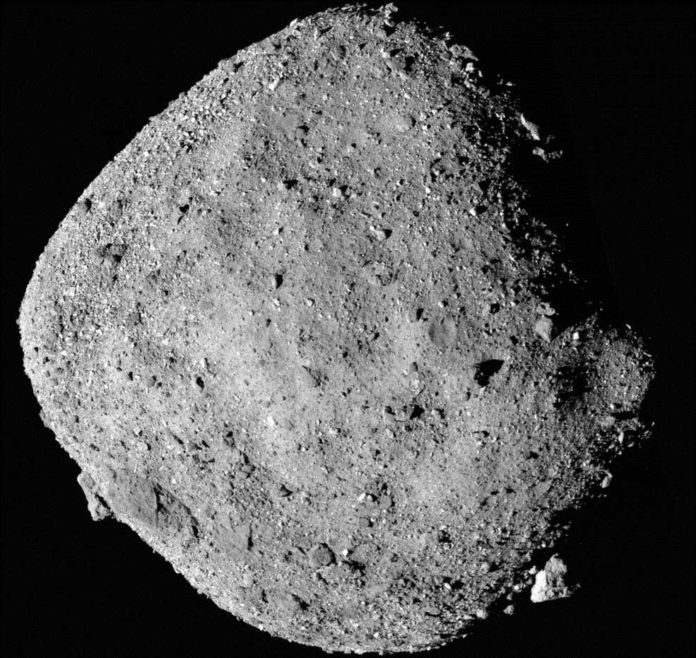OSIRIS- REx was launched on 8 September 2016 and has been slowly approaching Bennu. Recently analyzed data from NASA’s OSIRIS-REx probe discovered ingredients for water on a relatively nearby skyscraper-sized asteroid Bennu.
During the mission’s approach phase, the spacecraft has completed its journey through space of two billion kilometers and arrived at its destination, asteroid Bennu, on Monday, Dec. 3, 2018.
The probe discovered traces of hydrogen and oxygen molecules – part of the recipe for water and thus the potential for life – embedded in the asteroid’s rocky surface. The presence of molecules that contain oxygen and hydrogen atoms bonded together, known as hydroxyls- suggesting that Bennu’s rocky material interacted with water.
However, the findings suggest that liquid water was present at some time on Bennu’s parent body, a much larger asteroid.
Amy Simon, OVIRS deputy instrument scientist at NASA’s Goddard Space Flight Center in Greenbelt, Maryland said, “The presence of hydrated minerals across the asteroid confirms that Bennu, a remnant from early in the formation of the solar system, is an excellent specimen for the OSIRIS-REx mission to study the composition of primitive volatiles and organics. When samples of this material are returned by the mission to Earth in 2023, scientists will receive a treasure trove of new information about the history and evolution of our solar system.”
University of Arizona planetary scientist Dante Lauretta said, “We have found the water-rich minerals from the early solar system, which is exactly the kind of sample we were going out there to find and ultimately bring back to Earth.”
The mission currently is performing a preliminary survey of the asteroid, flying the spacecraft in passes over Bennu’s north pole, equator, and a south pole at ranges as close as 4.4 miles (7 km) to better determine the asteroid’s mass.
The mission’s scientists and engineers must know the mass of the asteroid in order to design the spacecraft’s insertion into orbit because mass affects the asteroid’s gravitational pull on the spacecraft. Knowing Bennu’s mass will also help the science team understand the asteroid’s structure and composition.
